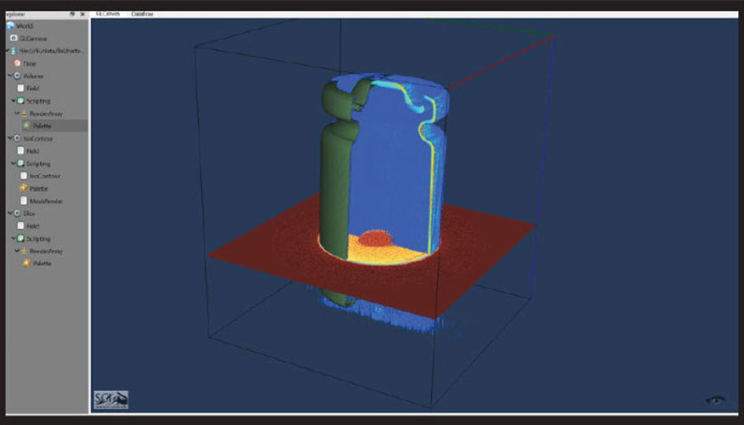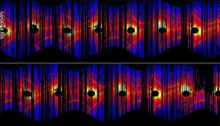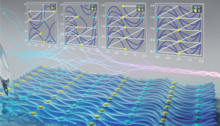From plasma to digital twins
LLNL's Nondestructive Evaluation (NDE) group has an array of techniques at its disposal for inspecting objects’ interiors without disturbing them: computed tomography, optical laser interferometry, and ultrasound, for example, can be used alone or in combination to gauge whether a component’s physical and material properties fall within allowed tolerances. In one project, the team of NDE specialists and university collaborators tackled integration of data from multiple modalities into composite images, a task more complex than merely overlaying multiple images. Each modality is uniquely suited to detecting particular features and compositions, and each supports a different spatial resolution. The research group has also transformed multimodal data into true-to-life “digital twins,” ultra-precise computed replicas of a component’s structural and material properties. Using digital twins, scientists can simulate properties including heat transfer and physical deformation to ascertain a component’s performance and longevity. “A good digital twin is better than a snapshot in time,” says Harry Martz. “For example, each time an airplane lands, rubber is stripped off the outer layer of its tire. With a digital twin, we can predict how friction and stress will impact the tire’s performance both in its current state and after repeated landings to determine when it might need replacement.” In another project, the team developed a library of algorithms to combine data from XCT, ultrasound, and neutron imaging methods and visualize 3D component reconstructions. Using the numerical technique of forward projection to estimate unseen features, preliminary reconstructions were iteratively refined and rebuilt through a machine learning model that adjusted geometry and reduced modality-specific artifacts. The team first tested their method on exemplars to further tune the computing process before applying it to additively manufactured components. The resulting model is more than the sum of its parts, reflecting the most confident readings obtained from each modality individually. They then transformed statistics into a comprehensible, user-friendly form using the open-source OpenViSUS software to organize, analyze, and visualize massive datasets. Read more in Science & Technology Review.







